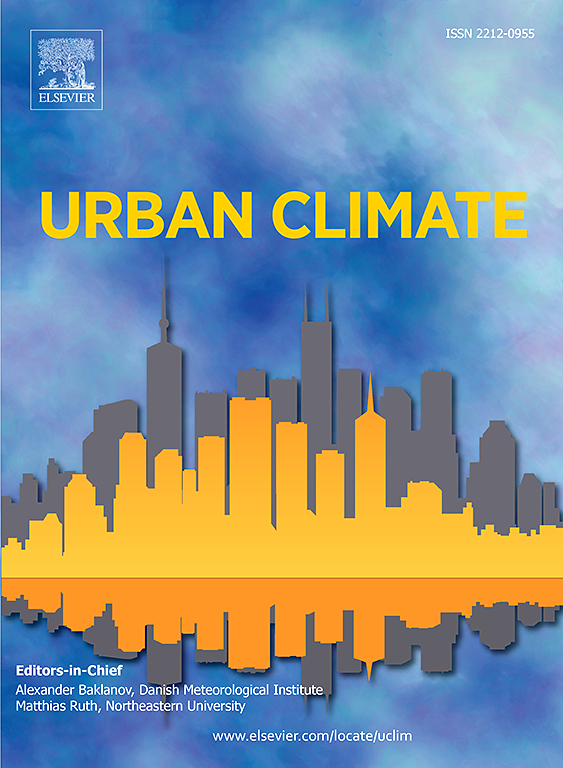The scale-dependent effects of urban 3D morphology on urban ozone pollution across different climate zones in China
IF 6
2区 工程技术
Q1 ENVIRONMENTAL SCIENCES
引用次数: 0
Abstract
Urban ozone pollution (UOP) is considered one of the most challenging environmental problems. However, how urban two- and three-dimensional (2D, 3D) morphology affect UOP is not yet fully understood. Based on Boosted Regression Tree (BRT) model, we investigated the spatial patterns and explored scale-dependent effects of urban 3D morphology and UOP across different climate zones in China. Our results indicate that Chinese urban agglomerations are characterized by medium rise and high density, with an average building height of 15.69 m and a density of 0.18. The UOP is severe in Chinese urban agglomerations during summer, especially in the Beijing-Tianjin-Hebei urban agglomerations (161.51 μg/m3), where medium-rise and medium-density urban agglomerations (169.5 μg/m3) experience the most severe UOP. At localized scales (≤1 km buffer), 3D morphological parameters—specifically high building ratio (HBR) and spatial congestion degree (SCD)—jointly explain 53.14 % of UOP variability. Threshold analyses demonstrate progressive ozone concentration reduction when HBR exceeds 15 %, whereas SCD values surpassing 6 % induce pollution escalation. But with increasing distance, the dominant factors are quickly replaced by 2D building morphology such as building density (BD) and road density (RD), with a contribution rate of 74.54 %. When BD exceeds 25 % or RD surpasses 0.39 %, the ozone concentration experiences a nonlinear increase as BD and RD continue to grow. Our study aims to provide valuable references for urban planners to reduce UOP through effective urban planning.
中国不同气候带城市三维形态对城市臭氧污染的尺度依赖效应
城市臭氧污染被认为是最具挑战性的环境问题之一。然而,城市二维和三维(2D, 3D)形态如何影响UOP尚不完全清楚。基于增强回归树(boosting Regression Tree, BRT)模型,研究了中国不同气候带城市三维形态和UOP的空间格局和尺度依赖效应。结果表明:中国城市群具有中等高度、高密度的特征,平均建筑高度为15.69 m,建筑密度为0.18;中国城市群夏季UOP较为严重,其中京津冀城市群UOP最为严重(161.51 μg/m3),中高中密度城市群UOP最为严重(169.5 μg/m3)。在局部尺度(≤1 km缓冲),三维形态参数,特别是高建筑比率(HBR)和空间拥塞度(SCD)共同解释了53.14%的UOP变异。阈值分析表明,当HBR超过15%时,臭氧浓度逐渐降低,而SCD值超过6%时,污染加剧。但随着距离的增加,主导因素迅速被建筑密度(BD)和道路密度(RD)等二维建筑形态所取代,贡献率为74.54%。当BD超过25%或RD超过0.39%时,臭氧浓度随BD和RD的持续增长呈非线性增长。我们的研究旨在为城市规划者通过有效的城市规划来减少UOP提供有价值的参考。
本文章由计算机程序翻译,如有差异,请以英文原文为准。
求助全文
约1分钟内获得全文
求助全文
来源期刊

Urban Climate
Social Sciences-Urban Studies
CiteScore
9.70
自引率
9.40%
发文量
286
期刊介绍:
Urban Climate serves the scientific and decision making communities with the publication of research on theory, science and applications relevant to understanding urban climatic conditions and change in relation to their geography and to demographic, socioeconomic, institutional, technological and environmental dynamics and global change. Targeted towards both disciplinary and interdisciplinary audiences, this journal publishes original research papers, comprehensive review articles, book reviews, and short communications on topics including, but not limited to, the following:
Urban meteorology and climate[...]
Urban environmental pollution[...]
Adaptation to global change[...]
Urban economic and social issues[...]
Research Approaches[...]
 求助内容:
求助内容: 应助结果提醒方式:
应助结果提醒方式:


